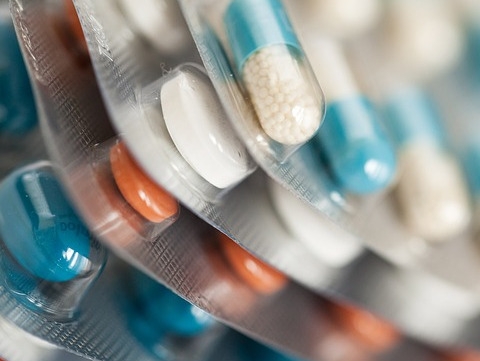Hydrocortisone inhibits prostaglandin synthesis by inhibiting the enzyme phospholipase A2. Hydrocortisone reduces various vasoactive agents released during inflammation. It also controls the rate of protein synthesis.
Pharmacology
Hydrocortisone is a naturally occurring corticosteroid, which causes profound and varied metabolic effects. In addition, they modify body’s immune response to diverse stimuli. Hydrocortisone sodium succinate has the same metabolic and anti-inflammatory actions as hydrocortisone.
Indications
Adrenocortical insufficiency, shock, hypersensitivity reactions such as angioedema, status asthmaticus, inflammatory bowel disease and rheumatic disease.
Dosage & Administration
By IM injection or slow IV injection or infusion. The initial dose of Hydrocortisone sterile powder is 100 mg to 500 mg, depending on the severity of the condition. This dose may be repeated at intervals of 2, 4 or 6 hours as indicated by the patient’s response and clinical condition.
Children: By slow IV injection, up to 1 year 25 mg, 1-5 years 50 mg, 6-12 years 100 mg.
The initial dosage of Hydrocortisone Tablets may vary from 20 mg to 240 mg of hydrocortisone per day depending on the specific disease entity being treated.
[wp_ad_camp_1]
Contraindications
Hydrocortisone is contraindicated in severe systemic fungal infections and patients with known hypersensitivity to any component of this product.
Warnings & Precautions
Hydrocortisone should be used with caution in patients with a history of peptic ulceration as it increases the incidence of peptic ulceration. This drug should be used with caution in patients with cardiac failure, hypertension, glaucoma, diabetic mellitus and epilepsy.
Side Effects
Hydrocortisone is generally well tolerated except in prolonged high doses. It may cause cardiac arrhythmia, esophageal candidiasis, menstrual irregularity, decreased carbohydrate & glucose tolerance, fluid retention, increased appetite, weight gain, euphoria, mood swings, depression, insomnia, acne etc.
Drug Interaction
Drugs that induce hepatic enzymes such as Phenobarbital, Phenytoin and Rifampin may increase the clearance of corticosteroids and may require increases in corticosteroid dose to achieve the desired response. Drugs such as Troleandomycin and Ketoconazole may inhibit the metabolism of corticosteroids and thus decrease their clearance. Therefore, the dose of corticosteroid should be titrated to avoid steroid toxicity.
Use in special groups:
Use in pregnancy: Pregnancy category C drug. Corticosteroids should be used during pregnancy only if the potential benefit justifies the potential risk to the fetus.
[wp_ad_camp_1]
Use in nursing mother: Systemically administered corticosteroids appear in human milk and could suppress growth, interfere with endogenous corticosteroid production, or cause other untoward effects. Because of the potential for serious adverse reactions in nursing infants from corticosteroids, a decision should be made whether to continue nursing or discontinue the drug, taking into account the importance of the drug to the mother.
Use in elderly patients: Clinical studies were not done in patients’ aged 65 and above. In general dose selection for an elderly patients should be cautious, usually starting at the low end of the dosing range.






